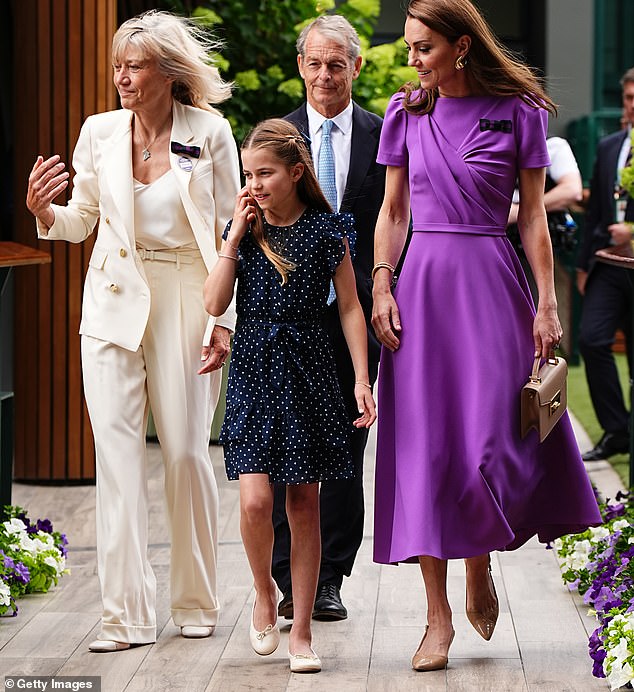It is a timeless pattern that has graced the wardrobes of monarchs, princesses and young royals alike.
From the late Queen Elizabeth II and Princess Anne to Princess Diana and now Kate Middleton and Princess Charlotte, polka dots have remained a fashion staple.
In fact, it was Charlotte who continued the trend at Wimbledon earlier this month, when she attended the men’s singles final with her mother in a navy polka dot and ruffle dress by Guess.
Princess Margaret, one of fashion’s greatest lovers, introduced the print to the royal household in the late 1940s and it was quickly adopted as a signature garment by the late Queen Elizabeth II, especially in the early years of her reign.
Diana and Sarah, Duchess of York, were the first to adopt polka dot dresses in the 1980s, after Princess Anne did so in the 1960s.
Princess Charlotte wore a navy polka dot ruffled dress by Guess to attend the Wimbledon men’s final alongside her mother, the Princess of Wales, on Sunday.
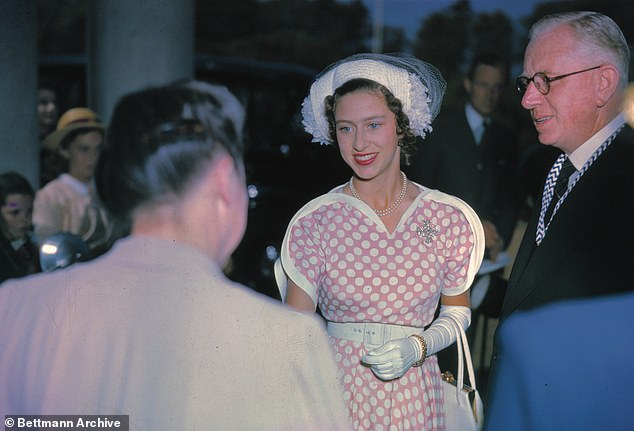
Princess Margaret, a fashion-forward woman, bought the print for the royal household in the late 1940s. Above: Margaret reopening a teacher training college in Eltham, south-east London, in 1949
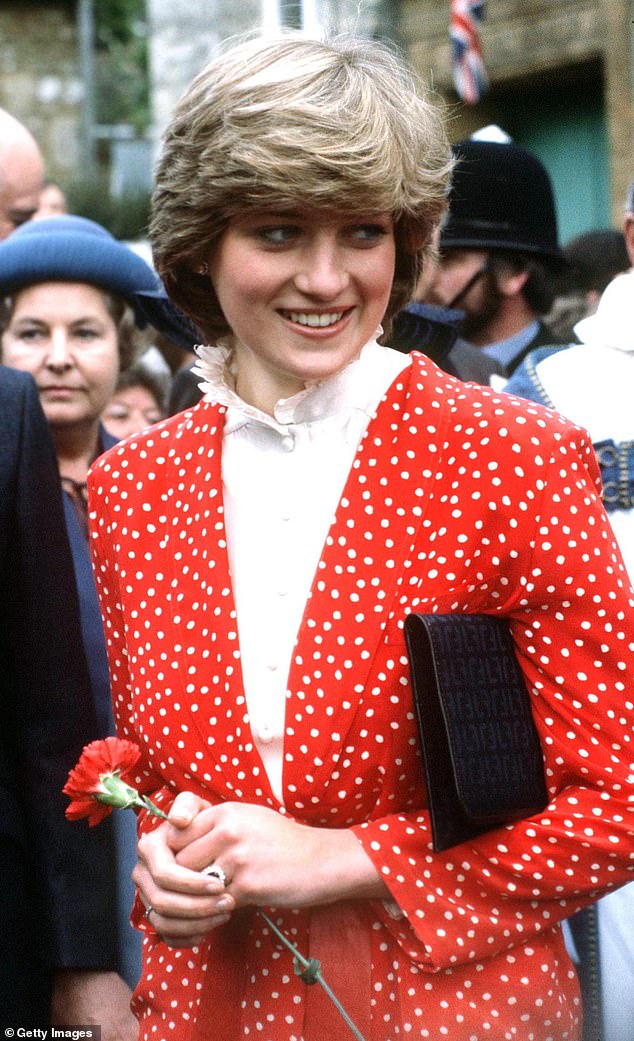
In May 1981, shortly after her engagement to Prince Charles was announced, Lady Diana Spencer wore a polka dot dress by Jasper Conran.
Kate’s use of pattern shows that she knows her clothes are much more than just clothes – they convey a message.
Alessandra Rich has been the designer behind most of Kate’s polka dot pieces, from her midi dress at Wimbledon in 2022 to a high-necked, long-sleeved number at Royal Ascot the same year.
The latter was an almost exact replica of a Victor Edelstein dress that Princess Diana wore to the same event four decades earlier.
For Prince Philip’s memorial service in March 2022, she chose a monochrome polka dot design.
In 1982, Diana introduced newborn Prince William to the press on the steps of St Mary’s Hospital in a teal polka dot dress.
Thirty-five years later, Kate chose a similar Jenny Packham dress when she gave birth to a newborn, Prince George.
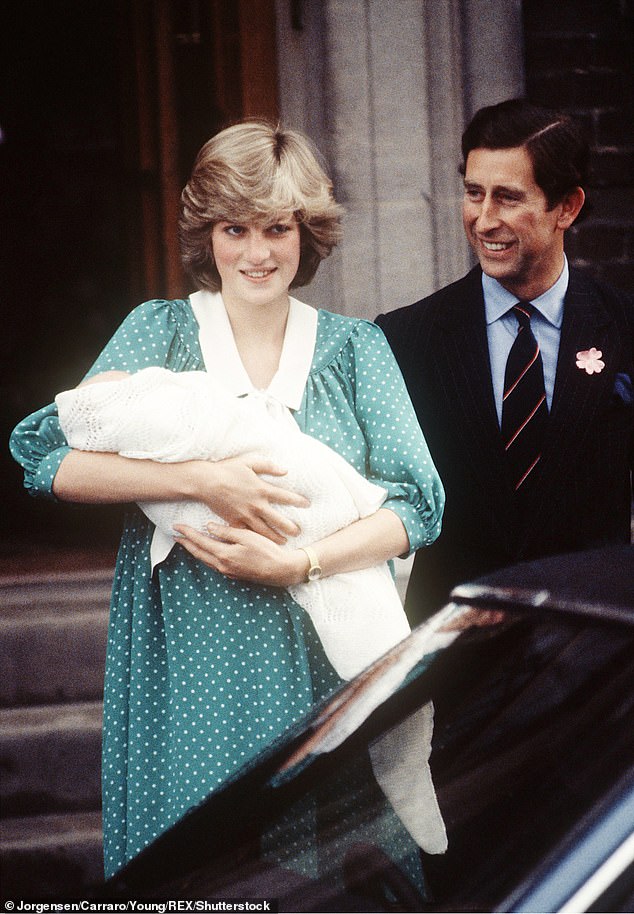
In 1982, Diana introduced newborn Prince William to the press on the steps of St Mary’s Hospital in teal polka dots.
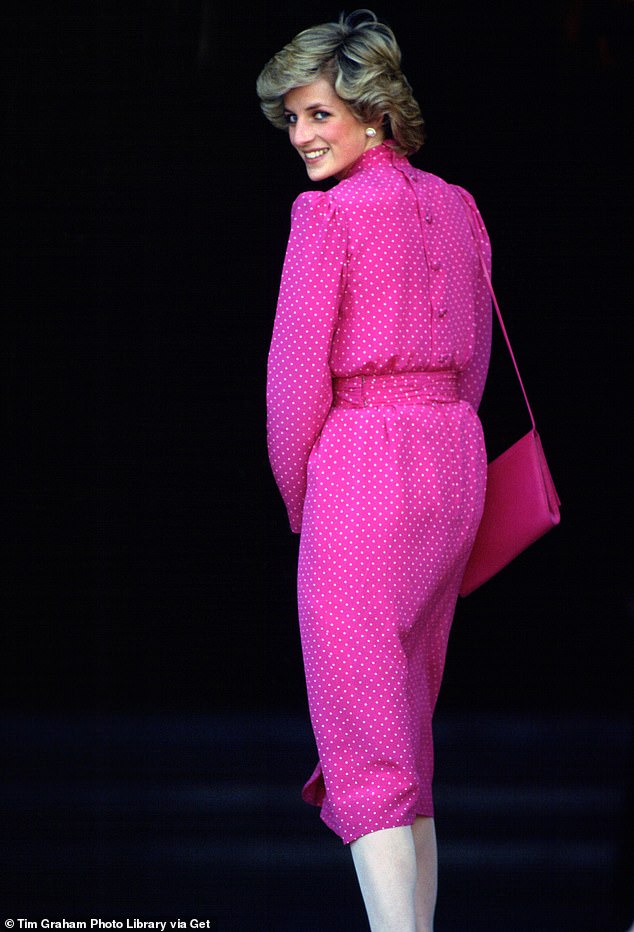
Diana wore a fuchsia polka dot dress by Donald Campbell when she visited Rome in 1985.
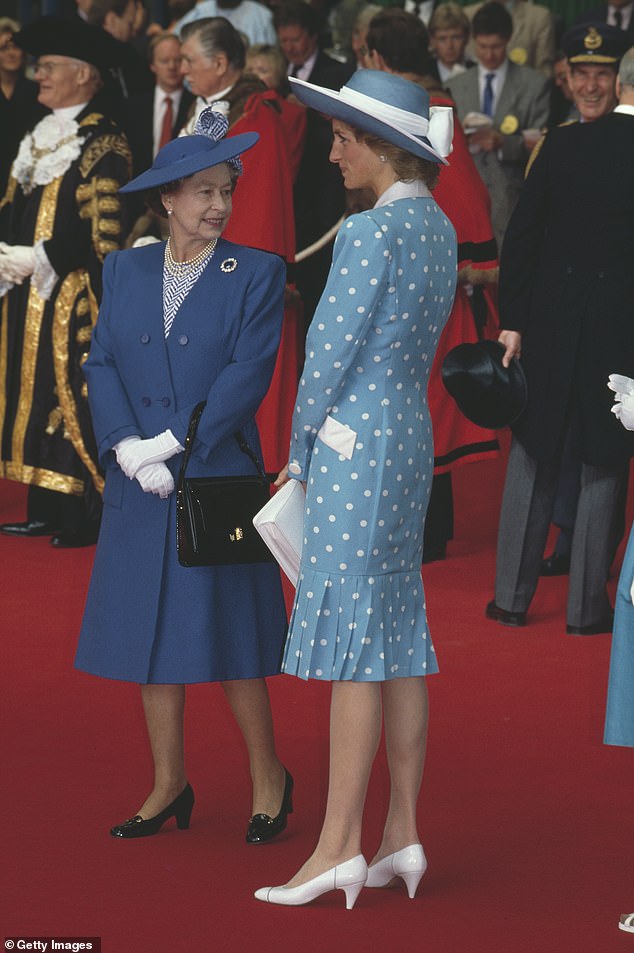
Princess Diana wearing a Catherine Walker blue suit with white polka dots as she awaits the arrival of West German President Richard von Weizsacker at Victoria Station at the start of his state visit, 1986
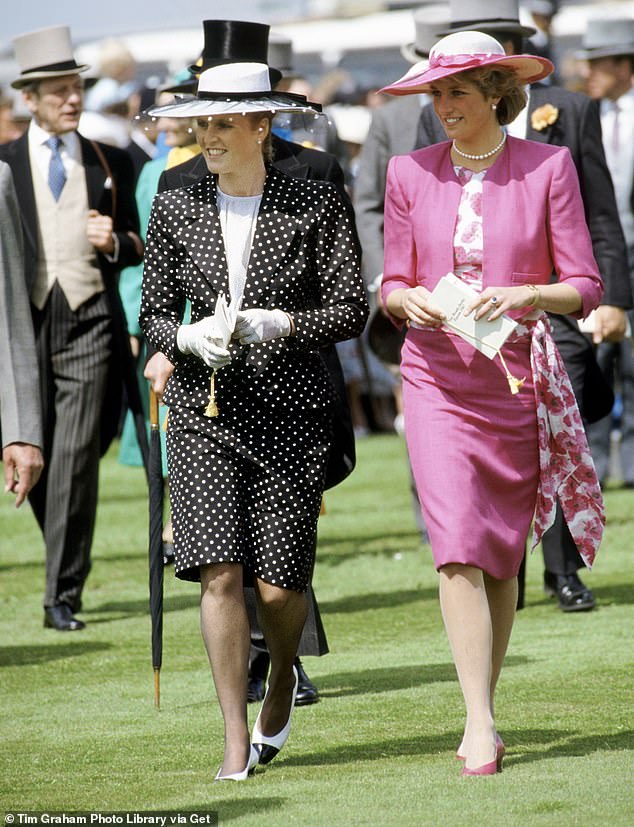
At the 1987 Epsom Derby, Sarah Ferguson wore a 1980s polka dot skirt suit with padded shoulders and was dressed in monochrome from head to toe.
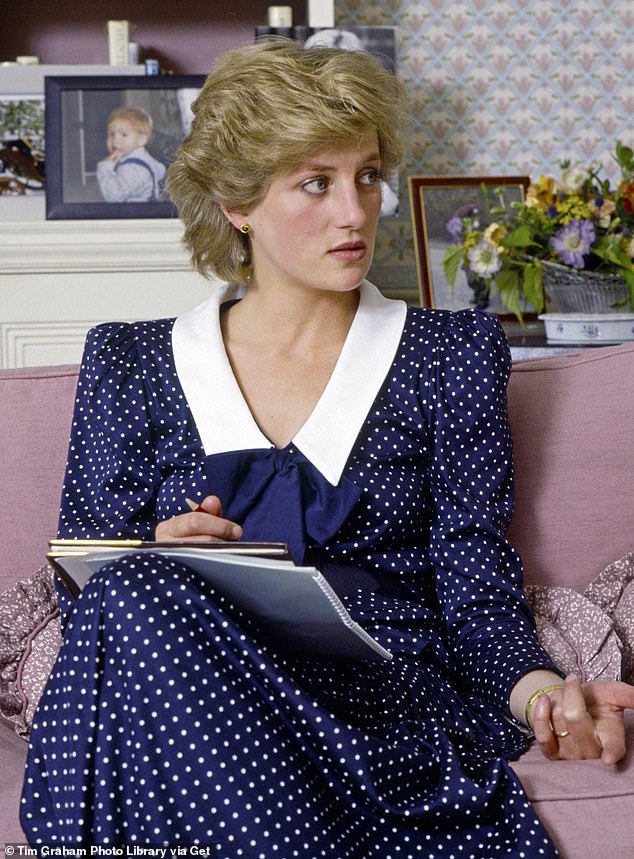
At her home in Kensington Palace, Princess Diana chose a navy and white polka dot dress with a white lapel and bow collar, October 1985.
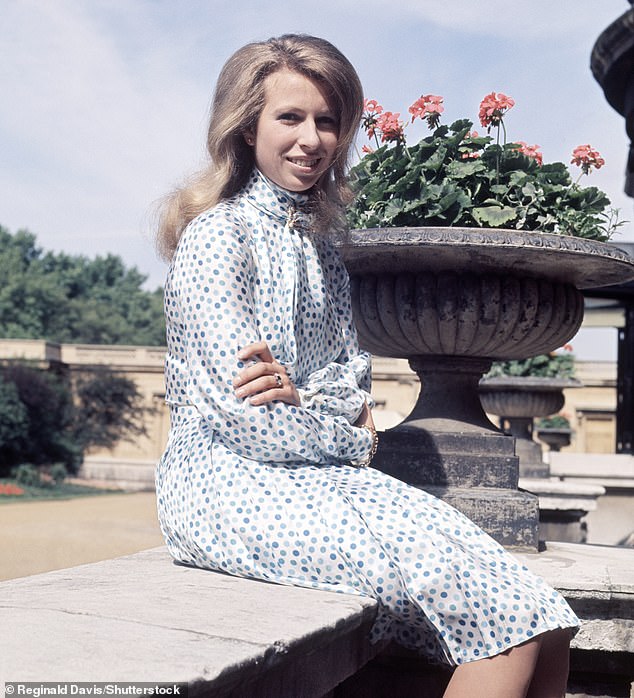
Princess Anne wore this pale blue and white polka dot dress on the grounds of Buckingham Palace in the 1960s.
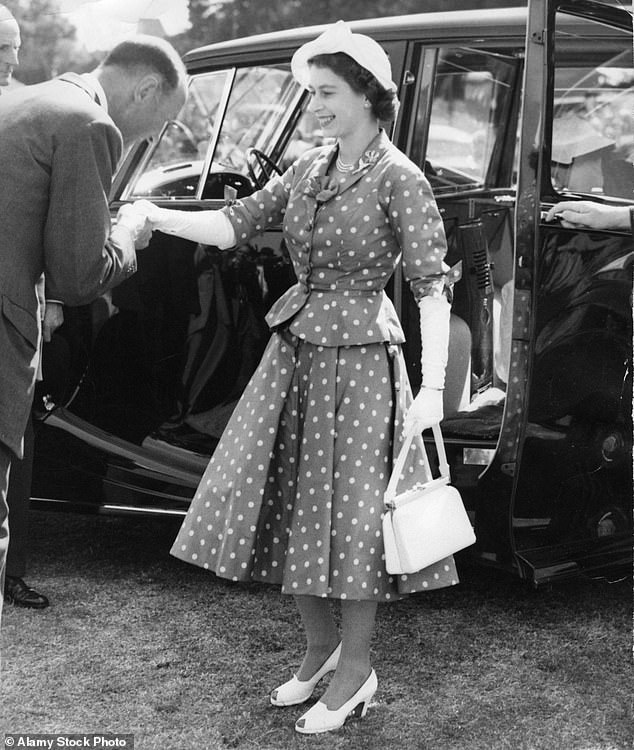
For the 1952 Royal Windsor Horse Show, Queen Elizabeth II, newly ascended to the throne following the death of her father, wore a structured peplum jacket and A-line skirt, both with a polka dot print.
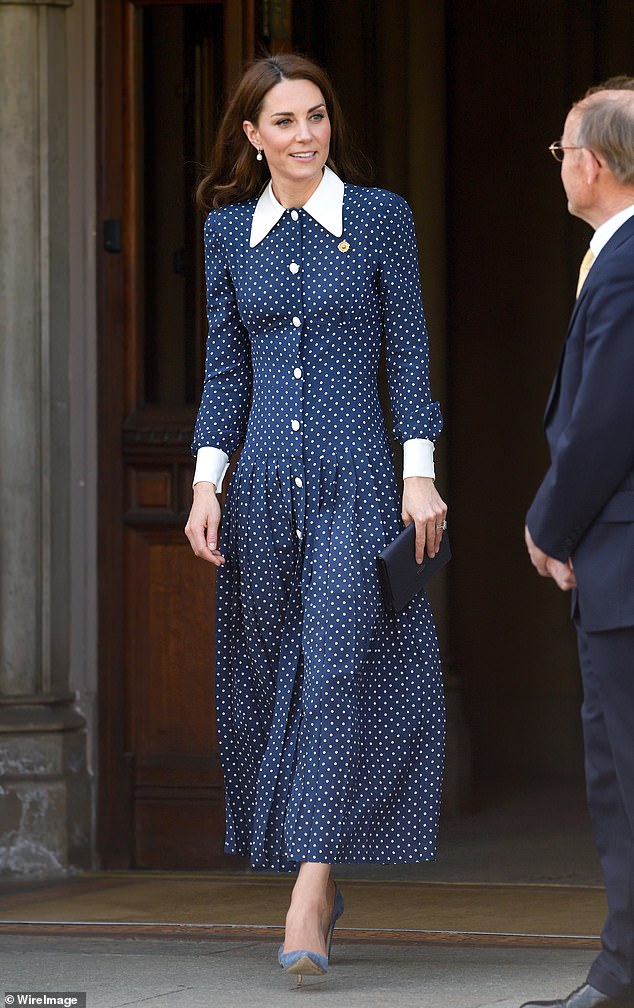
Kate wore an elegant button-down dress by her favourite designer, Alessandra Rich, to an exhibition at Bletchley Park in 2019.
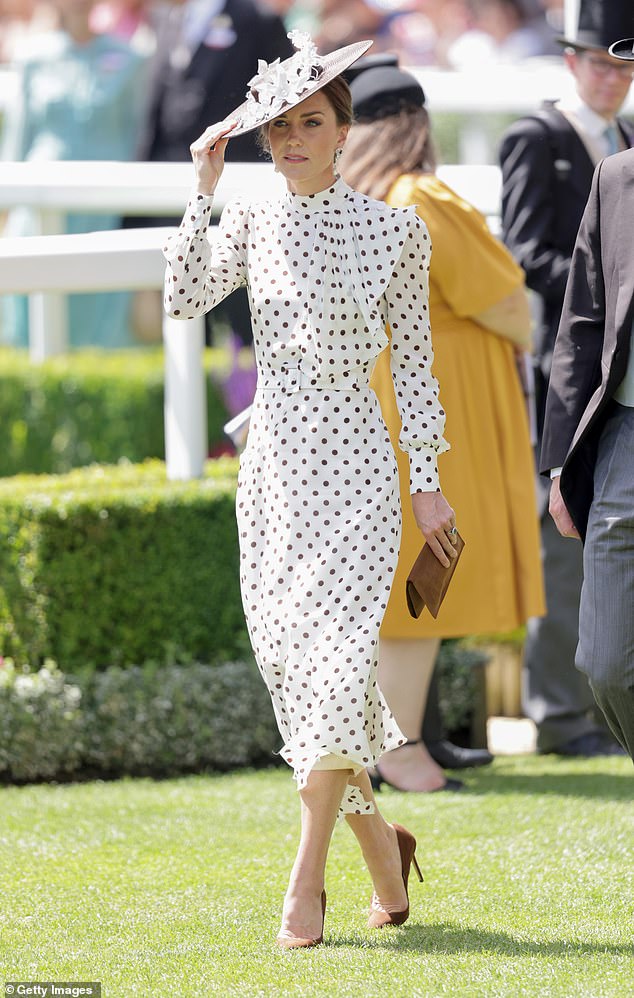
In a look reminiscent of Princess Diana, for Royal Ascot in 2022 Kate wore a white dress with brown polka dots by Alessandra Rich with a matching hat by Sally-Ann Provan.
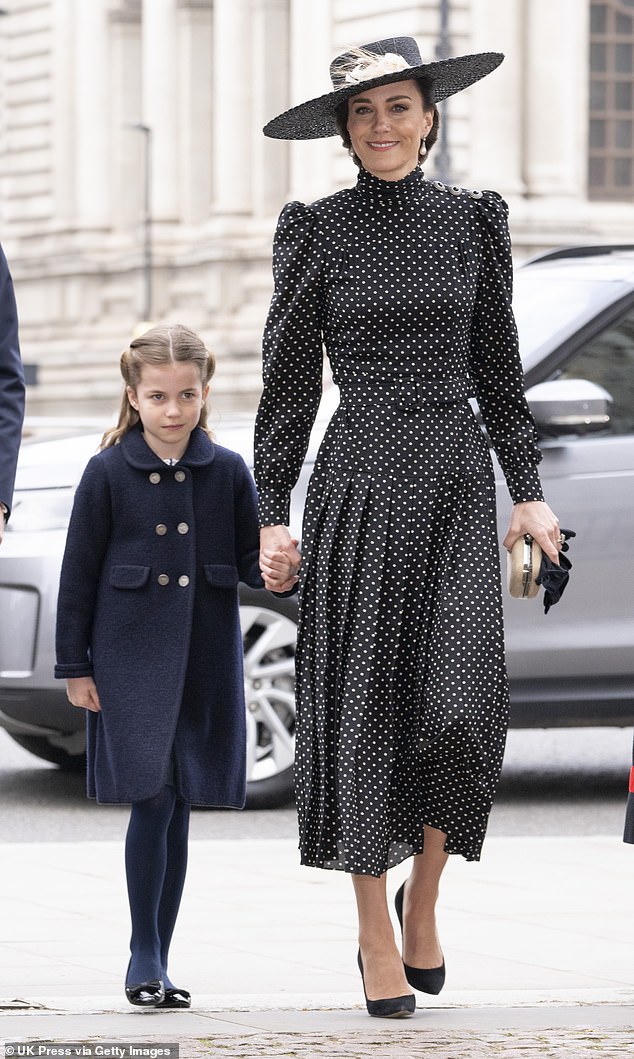
Kate attended Prince Philip’s memorial service at Westminster Abbey in 2022 wearing a long-sleeved Alessandra Rich dress with a high neck, a nod to 1970s style.
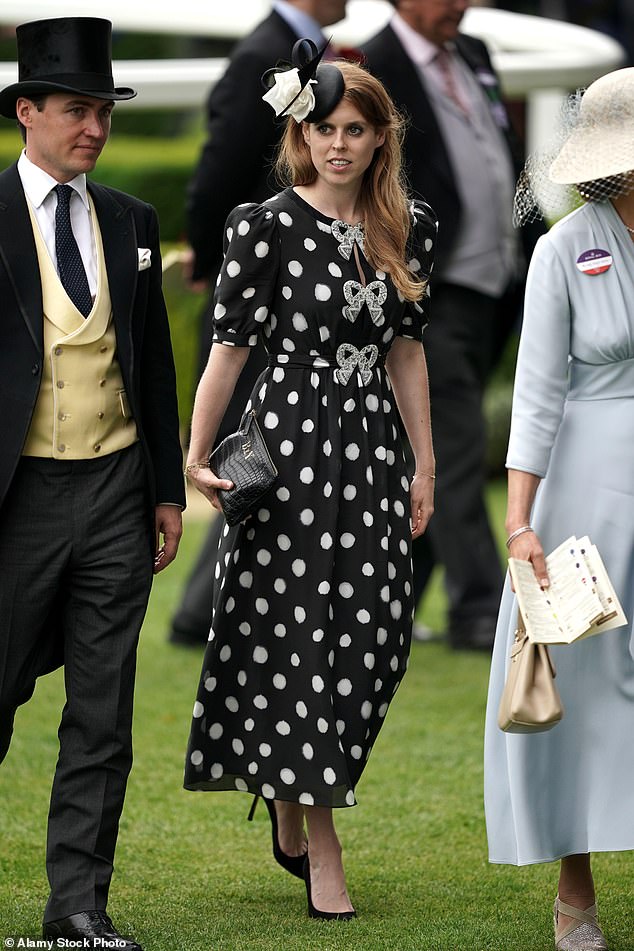
For Royal Ascot in 2022, Princess Beatrice gave her polka dots a glamorous touch with crystal bows adorning the front of her black and white polka dot dress by It-girl brand Saloni.
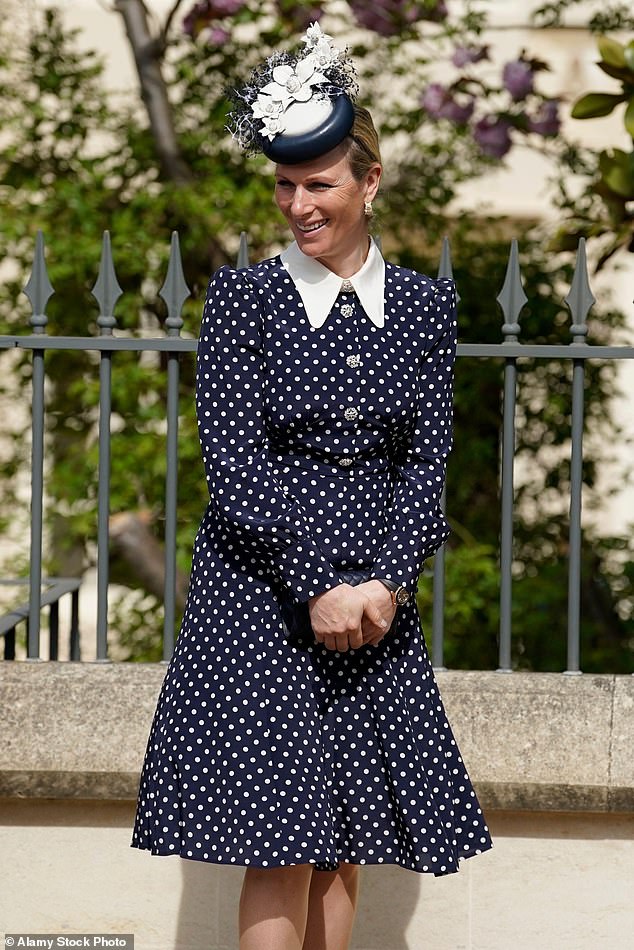
Zara Tindall wears a spectacular polka dot dress by LK Bennet embellished with eye-catching buttons for Easter Sunday 2022
And what has made this print remain so appealing over the decades?
Simplicity and versatility of printing are key factors.
Polka dots can be both casual and formal, making them suitable for all occasions.
Whether in a tailored dress for a formal event or a fun blouse for a more relaxed event, they effortlessly adapt to different settings.
Plus, polka dots have a nostalgic charm that evokes a sense of vintage glamour.
This sense of continuity and timelessness is particularly significant for the British royal family, considered the guardians of tradition and heritage.

